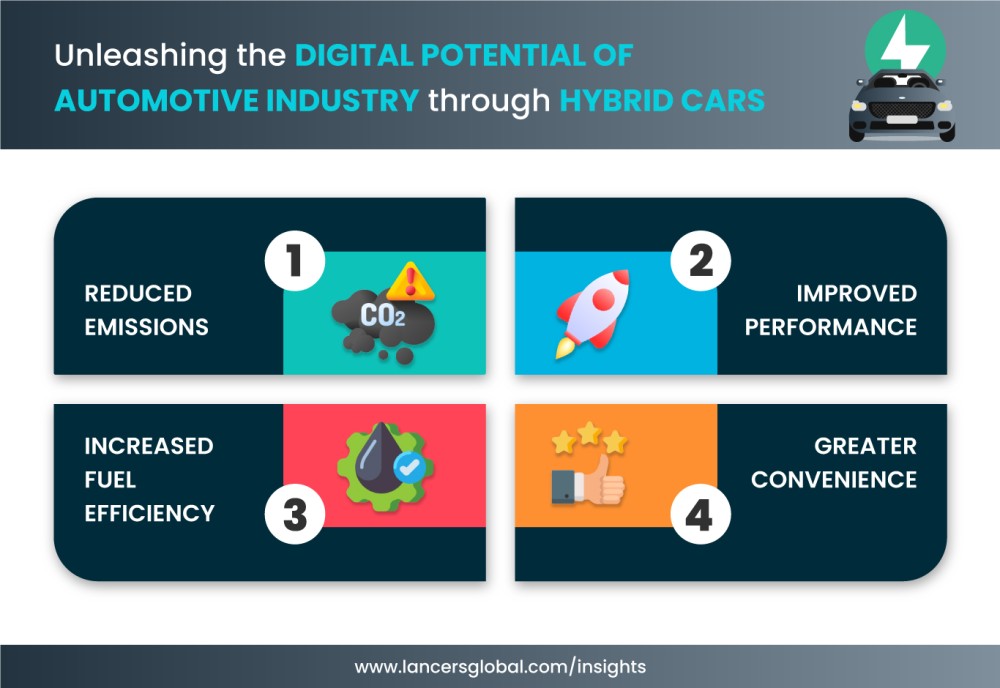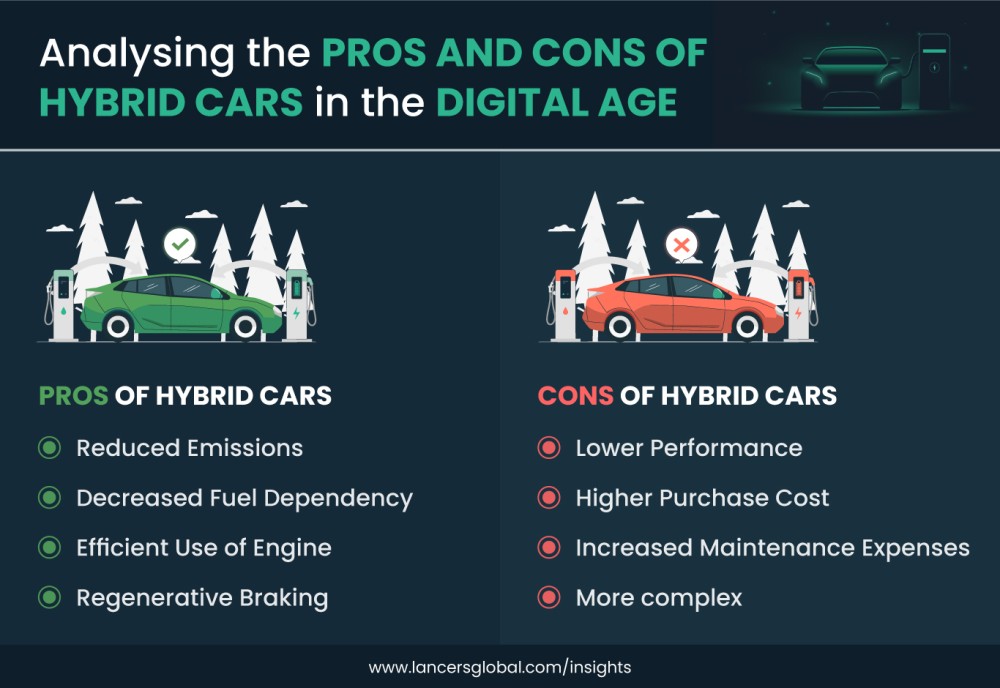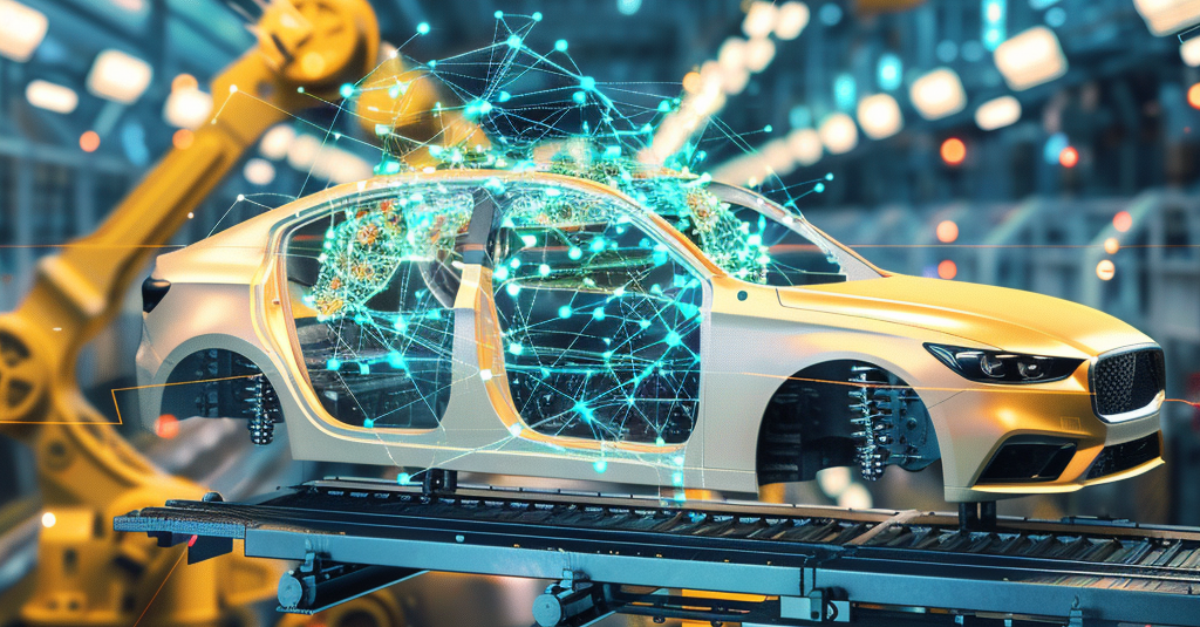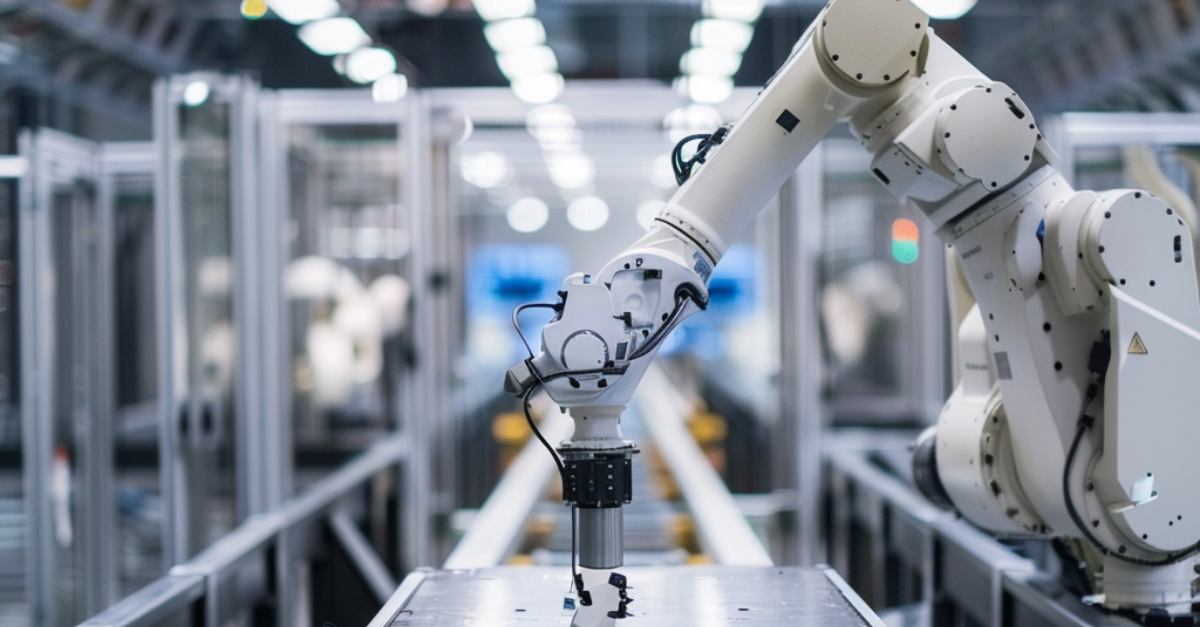Driving the Digital Revolution: How Hybrid Cars Lead the Automotive Industry's Digital Transformation
The digital transformation in the automotive industry is experiencing a significant shift, with a growing emphasis on eco-friendly vehicles. Drivers who embrace advanced technology no longer prefer conventional cars. In the past, the impact of climate change on our commute habits seemed unimaginable. However, with the rise of sustainability, digitalization, and technological disruptions, hybrid cars have become essential and are leading this transformation.
In India, achieving fully eco-friendly transportation will take time due to the nature of electricity generation. Companies like Maruti Suzuki India and Toyota argue that hybrid cars are a more practical option in markets lacking sufficient infrastructure for electric vehicles. According to John Smith, CEO of Toyota, "Hybrid cars are a key part of the automotive industry's transition to a more sustainable future". They stress the importance of offering a diverse range of choices. This is one of the factors contributing to the expected rise in hybrid cars, which are anticipated to represent 12% of all new car sales by 2023, with global sales projected to reach 2.5 million units, a 10% increase from the previous year.
Hybrid vehicles represent the future of transportation, as they are now more fuel-efficient, environmentally conscious, and technologically advanced than ever before. Along with their fuel-saving benefits, hybrid cars actively drive digital transformation in the automotive industry. They incorporate features such as telematics systems that collect data on driving habits and vehicle performance. This data can be utilised to improve the design, performance, and development of hybrid cars, as well as create new services and applications that benefit drivers both financially and environmentally.
As the automotive industry continues to adopt digital technologies, hybrid cars will play an increasingly crucial role in driving the overall digital transformation.
What is a Hybrid Car?
A hybrid car is a vehicle that combines the features of electric cars and traditional gasoline-powered cars, utilising two types of engines: one powered by gasoline and the other by electricity. These engines work in harmony to propel the wheels, resulting in reduced gasoline consumption and improved fuel efficiency. By harnessing the advantages of both electric and combustion engines, hybrids offer superior power and fuel efficiency compared to conventional vehicles. During cruising or braking, hybrid vehicles generate surplus power, which is used to recharge the batteries. This enhances fuel efficiency and extends the vehicle's range.
How do Hybrid Cars Function?
Hybrid cars operate by combining power from an internal combustion engine (usually gasoline) with one or more electric motors. Unlike fully electric vehicles, hybrid cars typically have a lower battery range as their electrical capacity is primarily designed to supplement gasoline driving and optimise fuel efficiency. Some hybrids offer an electric-only mode for limited speeds and short distances. In city driving conditions, hybrids are often more efficient as they automatically draw power from the electric motor at lower speeds. Hybrid cars are considered a transitional option in the shift towards renewable energy sources and away from fossil fuels.
Unleashing the Digital Potential of the Automotive Industry Through Hybrid Cars

- Reduced emissions: Hybrid cars produce lower emissions than traditional gasoline-powered cars, which helps reduce air pollution and contribute to a cleaner environment. This is important for digital transformation, as many of the technologies that are driving it, such as data centres and cloud computing, are major contributors to greenhouse gas emissions.
- Increased fuel efficiency: Hybrid cars are more fuel-efficient than traditional gasoline-powered cars, which can save businesses and individuals money on fuel costs. This can free up resources that can be used to invest in digital transformation initiatives.
- Improved performance: Hybrid cars can offer improved performance over traditional gasoline-powered cars, such as faster acceleration and better fuel economy. This can make them a more attractive option for businesses and individuals who need a car that can handle a variety of tasks, including commuting, running errands, and travelling.
- Greater convenience: Hybrid cars can offer greater convenience than traditional gasoline-powered cars, such as the ability to operate in electric mode for short distances, which can reduce the need to find and pay for parking. This can make them a more attractive option for businesses and individuals who are looking for a car that is easy to use and maintain.
As the demand for digital transformation continues to grow, hybrid cars are likely to play an increasingly important role in helping businesses and individuals meet their needs. In addition to the environmental and economic benefits, hybrid cars are also helping to drive digital transformation by providing a platform for new technologies. For example, many hybrid cars are equipped with telematics systems that can collect data on driving habits and vehicle performance. This data can be used to improve the design and performance of hybrid cars, as well as to develop new services and applications that can help drivers save money and improve the environment.
Exploring the Key Elements That Power Hybrid Electric Cars
The following are the key components responsible for generating power to propel hybrid cars:
Internal Combustion Engine:
In a conventional gasoline engine, fuel is injected into the internal combustion chamber, where it combines with air and is ignited by a spark plug.
Electric Traction Motor:
This motor draws power from the battery pack and transmits it to the wheels, enabling the vehicle to move.
Electric Generator:
This motor serves a dual purpose by generating electricity from regenerative braking, which helps recharge the battery pack. In some cases, it also functions as a drive motor.
Traction Battery Pack:
This pack stores electricity to power the electric motors and can also be recharged through the electric generator.
Types of Hybrid Cars:
Automobile manufacturers employ various hybrid designs with the aim of achieving optimal fuel efficiency or keeping hybrid car prices as affordable as possible. Below are the different categories of hybrid cars:
Parallel Hybrid:
The parallel hybrid design is the most common and popular type of hybrid car. It combines both electric and internal combustion engines to power the vehicle. These engines can operate together or independently, with the electric motor providing additional power when needed, such as during hill climbs or overtaking. Both power sources are connected in parallel to the gearbox or transmission, hence the name "parallel."
Series Hybrid:
In a series hybrid, both the gasoline internal combustion engine and the electric motor are present. However, the internal combustion engine does not directly propel the car. Instead, it generates electricity to recharge the battery pack. The battery pack then powers the electric motor(s), which in turn provide power to the wheels.
Plug-in Hybrid:
The plug-in hybrid improves on the conventional hybrid design by incorporating a larger battery pack that can be charged externally. Typically, it uses a 110-volt electrical socket, similar to electric cars, to charge the battery pack. As the plug-in hybrid car can also run solely on electric power once fully charged, there is a significant improvement in fuel efficiency.
Two-Mode Hybrid:
The two-mode hybrid operates in two distinct modes. In the first mode, it functions like a regular hybrid car. However, in the second mode, the design can adjust to different engine requirements to fulfil specific vehicle tasks.
Mild-Hybrid:
To address emission regulations and slightly enhance fuel efficiency without significantly increasing costs, car companies have adopted mild-hybrid designs. In this type of hybrid, the electric motor assists the gasoline engine in improving fuel efficiency, enhancing performance, or both. Additionally, it acts as a starter for the automatic start/stop function, which shuts off the engine when the vehicle comes to a stop, reducing fuel consumption.
Advantages and Disadvantages of Hybrid Cars:
Understanding the advantages and disadvantages of hybrid cars can provide valuable insights into this transitional technology as the automotive industry progresses toward fully electric vehicles.

Pros of Hybrid Cars:
- Reduced Emissions: Hybrid cars utilise both electric and internal combustion engines, resulting in lower emissions and a more environmentally friendly driving experience compared to traditional internal combustion engine vehicles.
- Reduced Fuel Dependency: By incorporating an electric motor to supplement the primary petrol engine, hybrid cars have access to additional power, reducing their reliance on fossil fuels.
- Efficient Use of Engine: Hybrid cars benefit from smaller engines since they are not solely responsible for propelling the vehicle, thanks to the assistance of the electric motor. This smaller engine size contributes to increased fuel efficiency.
- Regenerative Braking: Hybrid vehicles employ regenerative braking, which harnesses the energy generated during braking to recharge the battery. This feature eliminates the need to stop the vehicle to manually recharge the battery pack.
Cons of Hybrid Cars:
- Lower Performance: As hybrid cars prioritise fuel efficiency and range, their power and acceleration may lag behind those of conventional internal combustion engine vehicles.
- Higher Purchase Cost: Despite efforts by car manufacturers to narrow the pricing gap between conventional and hybrid vehicles, hybrids still tend to carry higher upfront costs.
- Increased Maintenance Expenses: Hybrid cars consist of multiple mechanical components and operate with two sets of engines, leading to higher maintenance costs compared to conventional vehicles. Additionally, not all mechanics are trained to repair hybrid cars, potentially limiting available servicing options.
- More complex: Hybrid cars are more complex than traditional gasoline-powered cars. This means that they may be more difficult to repair and maintain.
Conclusion
In conclusion, hybrid cars are a positive development that is being driven by the digital transformation of the automotive industry. By reducing carbon emissions, increasing fuel efficiency, improving performance, and offering greater convenience, hybrid cars are helping to make digital transformation more sustainable, affordable, and accessible, and they are helping to drive the development of new technologies that can benefit drivers and the environment. As the demand for digital transformation continues to grow, hybrid cars are likely to play an even more important role, and it is evident that we will see even greater advancements in the years to come.
Recent Posts








Add Comment
0 Comments